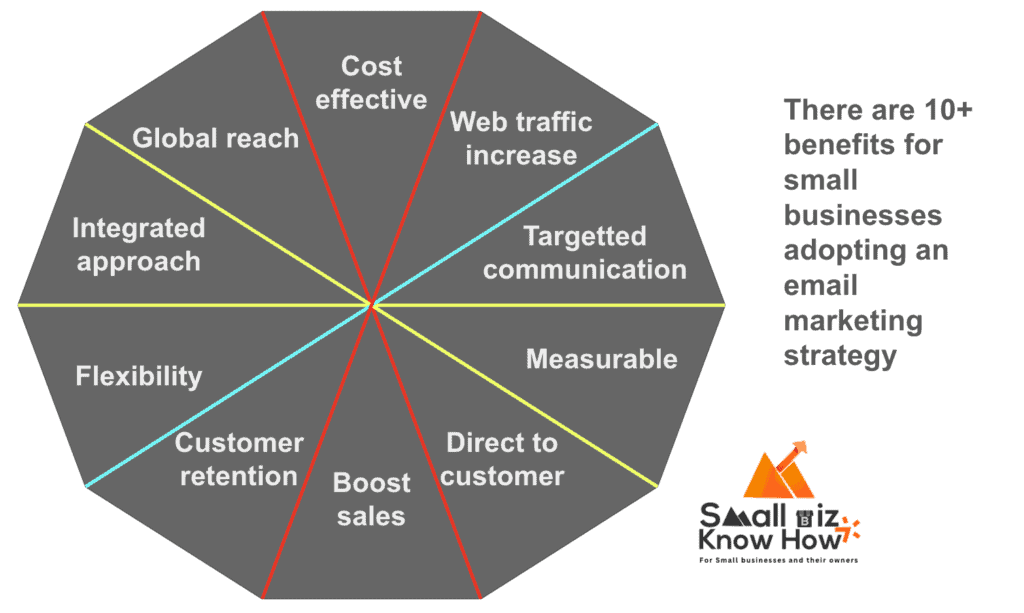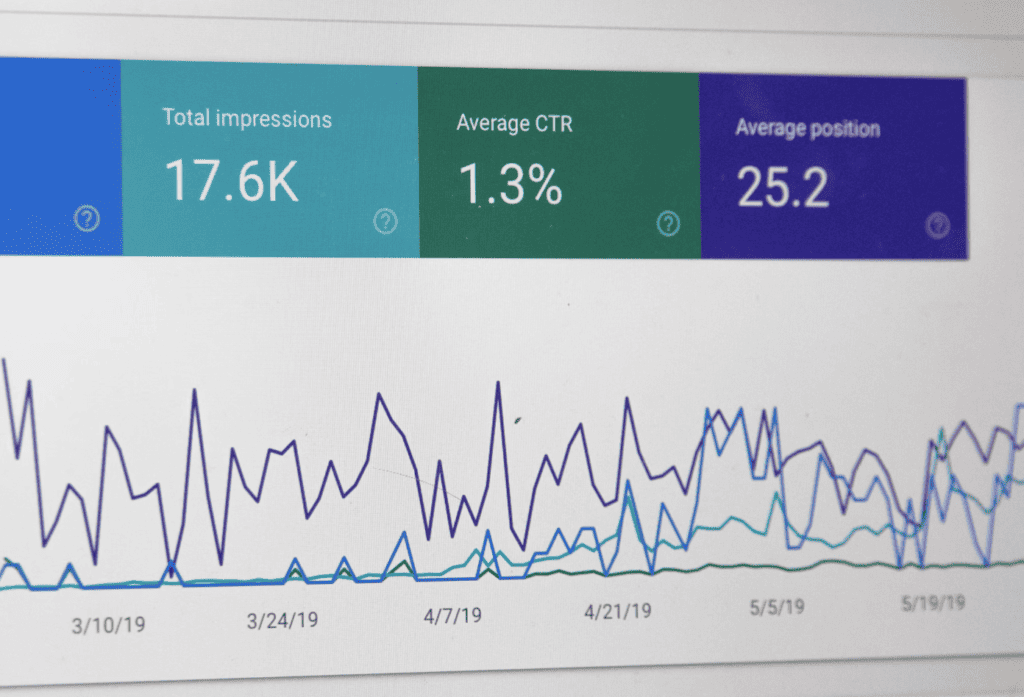In today’s digitized marketplace, understanding and nurturing potential customers through lead scoring is not just an option—it’s a necessity.
Lead scoring, a robust methodology within customer relationship management, enhances the precision of marketing efforts by assigning values to each lead based on their perceived value to the organization.
This article delves deep into the essence of lead scoring, from its fundamental concepts to the sophisticated tools and strategies that drive its success.
We’ll explore how businesses can implement lead scoring systems, utilize scoring criteria and models to better align sales and marketing efforts in lead generation, and ultimately increase conversion rates.
By guiding you through a methodical approach—from setting up your scoring framework to integrating advanced techniques—this piece aims to equip you with the knowledge to transform potential leads into loyal customers.
Whether you’re new to lead scoring or looking to refine your existing process, this comprehensive exploration offers valuable insights and practical advice to enhance your marketing strategy and boost your sales performance.
Introduction to Lead Scoring: What Is It?

Lead scoring is a systematic approach used in marketing to rank prospects against a scale that represents the perceived value each lead brings to the company. This technique enables marketers and sales teams to prioritize leads, respond to them appropriately, and increase the rate of conversions.
Basically, lead scoring quantifies the likelihood of a lead becoming a customer based on data-driven criteria such as demographic information, online behavior, and engagement level.
Conversely, lead scoring is not a one-size-fits-all solution nor is it solely about assigning arbitrary numbers to leads. It does not replace the need for personal interaction in sales; rather, it streamlines the process by identifying which leads are most worthy of direct attention.
This strategic tool differs from mere lead generation or collection—it focuses on the quality and readiness of leads to be pursued for conversion, ensuring marketing efforts are directed efficiently.
The Importance of Lead Scoring in Modern Marketing

Adopting lead scoring offers several crucial advantages in modern marketing, making it an essential strategy for businesses aiming to stay competitive.
Lead scoring is also an important element in measuring key lead generation KPIs:
- Enhanced Efficiency in Sales: Lead scoring prioritizes leads that are most likely to convert, allowing sales teams to focus their efforts where they are most likely to bear fruit. This targeted approach not only saves time but also increases the productivity of sales efforts.
- Increased Marketing ROI: By focusing on high-quality leads, businesses can allocate resources more effectively, ensuring that marketing dollars are spent on campaigns that reach the most promising prospects. This leads to a higher return on investment as the chances of conversion are maximized.
- Improved Lead Quality and Customer Experience: Lead scoring helps businesses understand the needs and interests of their leads better, enabling personalized communication that addresses specific customer pain points and preferences. This tailored interaction significantly enhances the customer experience and supports the development of stronger customer relationships.
Businesses that leverage lead scoring gain a significant edge over competitors who do not use this approach, as they can more quickly identify and nurture the leads that are most likely to result in successful sales, thereby accelerating their growth and enhancing their market position.
First Steps: Identifying Your Lead Scoring Goals
Lead scoring is used by various businesses for a variety of reasons. There can be a diverse set of goals and these goals can have a varying degree of impact on the business.
Here’s a table representing possible goals a business can have from lead scoring and the impact these goals can have on the business:
| Lead Scoring Goals | Impact on Business |
|---|---|
| Prioritize Sales Efforts | Optimizes sales team focus on leads most likely to convert, improving efficiency and conversion rates. |
| Resource Allocation | Ensures marketing resources are used more efficiently, targeting campaigns that are most likely to be successful. |
| Enhance Lead Nurturing | Leads are nurtured according to their score, enhancing personalized communication and improving customer experience. |
| Identify Sales-Ready Leads | Reduces time to conversion by fast-tracking high-scoring leads through the sales pipeline. |
| Improve Marketing and Sales Alignment | Ensures both teams focus on the same objectives, leading to a more cohesive strategy and better overall results. |
| Segmentation for Targeted Campaigns | Facilitates tailored marketing campaigns based on the scoring, leading to higher engagement rates. |
Each goal is directly linked to improving specific areas of the sales and marketing processes, ultimately contributing to increased efficiency, better resource management, and stronger revenue growth.
Understanding Lead Behavior: The Foundation of Scoring
Understanding the psychological aspects of lead behavior is crucial for effectively scoring both B2C and B2B leads. Here’s what you should keep in mind:
B2C Leads:
- Emotional Decision Making: B2C consumers often make purchasing decisions based on emotions, influenced by brand perception, product experience, and advertising.
- Impulse Buying: B2C leads might respond well to time-limited offers and promotions, reflecting a more spontaneous purchase behavior.
B2B Leads:
- Logical and Calculated Decisions: B2B purchasing decisions are typically more rational, revolving around ROI, total cost of ownership, and long-term benefits.
- Multiple Decision-Makers: B2B transactions often involve several stakeholders, each with different needs and expectations from a potential deal.
Influence on Scoring:
- For B2C leads, scoring might heavily weigh recent interactions and emotional engagement metrics like social media activity or response to marketing campaigns.
- In B2B scoring, emphasis might be placed on lead’s position within the company, their engagement over time, and specific content interactions that indicate a deep interest and understanding of the product.
By tailoring lead scoring models to these behaviors, businesses can more accurately predict and influence consumer actions, optimizing marketing efforts and improving conversion rates.
Scoring Tools and Systems: An Overview

Here’s an overview of various lead scoring tools and systems, along with their capabilities, pros, and cons based on external research:
| Tool/System | Capabilities | Pros | Cons |
|---|---|---|---|
| HubSpot | Automated, predictive lead scoring using machine learning. Custom scoring systems, traditional and predictive scoring available. | Automates lead scoring, adaptable to business changes, extensive integrations. | Complex setup, might be overwhelming for new users. |
| Salesforce | Advanced AI-powered lead scoring with Einstein AI, customizable pipelines, robust reporting. | Comprehensive features, highly customizable, strong reporting capabilities. | Steep learning curve, upgrades and advanced features can be costly. |
| EngageBay | Predictive lead scoring, smart lists for segmentation, landing page builder, social suite. | Unified platform for sales, marketing, service; cost-effective for small businesses. | Limited reporting features, automation requires upgrades. |
| Marketo | Lead management, scoring, and nurturing. Integrates with CRM systems for enhanced lead prioritization. | Strong automation capabilities, excellent for nurturing leads. | Can be expensive, requires time to learn effectively. |
| Zoho CRM | Multichannel lead scoring, integration with other Zoho products. | Affordable, good for small to medium businesses, easy to use. | Less advanced in terms of AI-driven capabilities compared to competitors. |
| Freshsales | AI-powered lead scoring, sales pipeline management, behavior-based scoring. | User-friendly, affordable for startups and SMBs, integrates well with other sales apps. | Limited customization options compared to larger platforms like Salesforce. |
These tools offer a variety of features that can suit different business needs, from startups to large enterprises. Businesses can choose based on their specific requirements for automation, reporting, customization, and budget constraints.
Each tool has its strengths and areas where it may not meet all user expectations, so it’s essential to align the choice with your business’s lead management and scoring goals
Lead Scoring Criteria: Making Your Unique Lead Scoring Formula

Lead scoring is a dynamic strategy used to prioritize leads based on their potential to convert into customers. The process involves assigning numerical values to each lead, which are calculated based on various criteria reflecting the lead’s engagement and demographic information.
This section explores how to start the process of developing a unique lead scoring formula, focusing on different sources of leads and deciding on the right metrics to score each source effectively.
Starting the Process
The first step in crafting a unique lead scoring formula is to clearly define what a qualified lead means for your business. This involves collaboration between marketing and sales teams to ensure alignment on the characteristics that make a lead valuable.
Begin by identifying the main sources of your leads—such as social media, email campaigns, webinars, or organic search—and understand the different interactions leads have with your brand across these channels.
Selecting the Right Metrics to score a lead
Once you understand where your leads are coming from, the next step is to select metrics that effectively reflect the lead’s journey and engagement level. The choice of metrics should be influenced by:
- Relevance: How well does the metric correlate with lead conversion?
- Accuracy: Can the metric be accurately measured?
- Timeliness: Does the metric reflect current behavior or interest?
Metrics can include website visits, email opens, content downloads, webinar attendance, or social media interaction. The weight assigned to each metric should reflect its importance in predicting a lead’s likelihood to purchase.
Lead Scoring Criteria for Different Sources
Each source of leads may require different criteria based on how leads from these sources interact with your marketing efforts. Here is a template table that outlines potential scoring criteria for various lead sources:
| Lead Source | Engagement Metric | Score | Behavior Indicator |
|---|---|---|---|
| Social Media | Likes/Shares | 10 | Interest in content |
| Open Rate | 20 | Engagement level | |
| Webinars | Attendance | 30 | Active interest |
| Website | Pages Visited | 40 | Depth of interest |
| Direct Inquiry | Form Submission | 50 | High purchase intent |
Developing Your Lead Scoring Model
After establishing the criteria, develop a scoring model that assigns points to each interaction based on its importance. The model might look like this:
- High value: Direct inquiries (e.g., demo requests, price inquiries)
- Medium value: Engagements showing interest (e.g., webinar attendance, downloading whitepapers)
- Lower value: Preliminary interactions (e.g., social media likes, page visits)
It’s important to also consider negative scoring for activities that might indicate disinterest or a bad fit, such as unsubscribing from emails or multiple website visits without any engagement.
Implementing and Adjusting Your lead scoring Model
With the model developed, implement it using your CRM or lead scoring software. Monitor the effectiveness of the scoring system and be prepared to adjust the scores and metrics as you gather more data on lead behavior and conversion rates.
Regular review and adjustments ensure that the scoring model stays relevant and continues to effectively prioritize leads.
Crafting an effective lead scoring system requires a deep understanding of where your leads come from and how they interact with your brand.
By carefully selecting metrics and adjusting them over time, you can create a powerful tool that prioritizes leads more effectively, enhances the efficiency of your sales team, and ultimately drives more conversions.
Always keep the lines of communication open between sales and marketing to ensure that the lead scoring system evolves with your business strategy and market conditions.
Quantitative vs. Qualitative Lead Scoring: Balancing the Scales

In lead scoring, both quantitative and qualitative methods play crucial roles, each offering distinct advantages and presenting unique challenges.
To optimize lead scoring, understanding how to balance these methods can enhance the accuracy of predicting a lead’s potential.
Qualitative Lead Scoring
Qualitative scoring involves subjective assessments that typically reflect the nuances of a lead’s engagement and interest levels that aren’t directly measurable. This method may include assessing:
- Lead’s enthusiasm during interactions: Whether on calls, emails, or in person, the perceived interest or excitement of a lead can be a strong indicator of their intent.
- Fit with brand values or culture: This considers how well a lead’s values align with those of the company, which can predict long-term customer success and loyalty.
- Quality of engagement: Going beyond just the frequency of interactions, looking at the depth of questions asked by the lead or the relevance of their responses during engagements.
Challenges and Costs involved in qualitative scoring
- Need for human intervention: Qualitative scoring requires significant human judgment, which can introduce bias and inconsistency if not carefully controlled.
- Limited scalability: As businesses grow, solely relying on qualitative measures becomes unsustainable due to the increasing volume of leads.
- Subjectivity: Different team members may have varying opinions on the same lead, leading to inconsistencies in scoring.
Quantitative Lead Scoring
Quantitative scoring, on the other hand, relies on concrete data and metrics such as:
- Website activity: Number of visits, pages viewed, and time spent on the site.
- Engagement with marketing materials: Open rates of emails, clicks, downloads of whitepapers, and attendance at webinars.
- Demographic information: Company size, industry, job title, and geographical location which can be easily scored and quantified.
Quantitative methods are favored for their objectivity and ease of automation, allowing for scaling as the volume of leads grows. However, they might miss the nuanced understanding of a lead’s true readiness or fit, which qualitative assessments can provide.
Balancing both qualitative and quantitative lead scoring
To effectively balance qualitative and quantitative lead scoring, follow these steps:
- Set clear criteria for both scoring methods: Establish which behaviors and traits qualify for qualitative scoring and ensure they are well understood across teams to maintain consistency.
- Integrate and automate quantitative data collection: Use CRM systems to automatically gather and score quantitative data points to reduce labor and improve accuracy.
- Regular training and calibration: Conduct regular sessions with sales and marketing teams to ensure everyone understands the criteria and remains consistent in their evaluations.
- Use technology to support qualitative assessments: Implement tools that allow for note-taking and tagging during customer interactions, which can later be quantified.
- Continuously test and refine: Regularly review the scoring model to ensure it aligns with sales outcomes and refine as necessary to adapt to changing market conditions or business objectives.
By thoughtfully integrating both quantitative and qualitative scoring methods, businesses can develop a more holistic view of their leads, enhancing the effectiveness of their prioritization and increasing conversion rates.
This balanced approach ensures that while the scalability and objectivity of quantitative methods enhance operational efficiency, the depth and insight of qualitative assessments contribute to more meaningful engagements with potential customers.
How to Calculate Lead Scoring: A Practical Guide (Lead scoring model example)
I will share an outline of an approach I followed when I was tasked with building a lead scoring approach at tech firm where i was responsible for sales operations.
The numbers and scores are just illustrate the concept while in reality things get a bit more complex.
Creating an effective lead scoring system for an Accounting SaaS product aimed at small business owners involves a nuanced understanding of the sources of leads and the level of engagement each type signifies.
Below is a detailed guide on how to assign scores to different lead sources, ensuring that each source has a uniform maximum score to facilitate comparison.
Step-by-Step Approach to defining scoring criteria
- Define Engagement Levels: Identify different levels of engagement for each lead source and assign scores accordingly. The highest score within each source should reflect the most significant buying signal.
- Standardize Scoring Scale: Ensure each lead source has a maximum potential score that reflects the highest possible buyer intent observable from that source. This standardization allows for easier comparison across sources.
- Incorporate Negative Scores: Adjust scores downward for actions that indicate a lack of interest or a poor fit, such as unsubscribing or negative feedback.
- Implement and Automate: Use CRM tools to automate the collection of engagement data and scoring based on predefined criteria, ensuring consistency and efficiency.
- Regularly Review and Adjust: Continuously analyze the performance of the scoring model and make adjustments based on sales feedback and conversion rates.
Detailed Scoring Template
Here’s an enhanced table that outlines how leads from various sources can be scored based on the level of engagement. Each source has been standardized to a maximum score of 50 for easy comparison:
| Lead Source | Engagement Metric | Score | Maximum Score | Reason for Score |
|---|---|---|---|---|
| Email Marketing | Opened Email | 10 | 50 | Shows initial interest in content |
| Clicked Link in Email | 20 | 50 | Indicates a deeper engagement looking for more details | |
| Filled out a survey | 30 | 50 | High engagement, providing personal insights | |
| Scheduled a Demo | 40 | 50 | Direct action showing strong purchase intent | |
| Organic Search | Visited FAQ Page | 10 | 50 | Seeking information, lower intent |
| Downloaded Free Resource | 20 | 50 | Engaged with valuable content | |
| Attended Free Webinar | 30 | 50 | Invested time in understanding the product | |
| Requested Pricing Information | 40 | 50 | High intent, considering purchase | |
| Paid Search | Clicked Ad | 10 | 50 | Expressed initial interest through targeted search |
| Visited Product Page | 20 | 50 | Specific interest in product details | |
| Used Cost Calculator | 30 | 50 | Engaged in practical evaluation of the product | |
| Contacted Sales | 40 | 50 | Direct query, high buying intent | |
| Social Media | Liked/Shared Post | 10 | 50 | General interest, low engagement |
| Commented on Post | 20 | 50 | Interactive, seeking or providing more information | |
| Followed Account | 30 | 50 | Ongoing interest in updates and information | |
| Engaged in a Contest | 40 | 50 | High engagement with brand activities | |
| Offline Events | Visited Booth | 20 | 50 | Face-to-face engagement, initial interest |
| Collected Marketing Materials | 30 | 50 | Took material to review later, indicating further interest | |
| Attended Product Demo | 40 | 50 | Significant interest and time investment | |
| Scheduled Follow-up Meeting | 50 | 50 | Strong intent to explore the product further |
Some hacks for Implementation
- Prioritize Lead Nurturing: Tailor nurturing campaigns based on the score to improve lead quality over time.
- Use Advanced Analytics: Leverage analytics to identify trends and patterns in lead scoring data, which can help refine the scoring criteria.
- Feedback Loop: Establish a feedback loop with the sales team to continuously refine the scoring model based on real-world outcomes and conversions.
By implementing this detailed and structured approach to lead scoring, the Accounting SaaS provider can efficiently prioritize high-potential leads, ultimately improving conversion rates and enhancing sales productivity.
Lead Scoring Model Best Practices
Implementing an effective lead scoring model is pivotal for optimizing the sales and marketing processes.
Here are some best practices to consider based on the comprehensive journey through establishing and refining a lead scoring system:
- Align Sales and Marketing: Ensure that both sales and marketing teams agree on the definition of a qualified lead. This alignment is crucial for setting up scoring parameters that accurately reflect the potential for conversion.
- Use a Mix of Qualitative and Quantitative Data: Balance the scoring model with both behavioral data (such as website engagement or event attendance) and demographic information (like job title or industry sector). This combination gives a well-rounded view of the lead’s potential.
- Prioritize Lead Fit and Intent: Differentiate scoring criteria based on how well leads fit the ideal customer profile (ICP) and their purchase intent. High scores should be given to leads that not only fit the profile but also show strong buying signals.
- Regularly Review and Update Scoring Criteria: As market conditions change, customer behavior evolves, and new products are launched, it’s essential to regularly review and adjust the scoring criteria to remain relevant and effective.
- Incorporate Negative Scoring: Deduct points for negative interactions or indicators of disinterest, such as unsubscribing from emails or multiple visits without engagement. This helps in deprioritizing leads that are unlikely to convert.
- Automate Where Possible: Use CRM and marketing automation tools to handle the routine tasks of data collection and lead scoring. Automation ensures consistency and eliminates human error, freeing up time for more strategic activities.
- Test and Refine: Continuously test the lead scoring model against actual sales data to measure its effectiveness. Adjust the scoring weights and criteria based on the outcomes to optimize the system.
- Educate Your Team: Regularly train team members on the lead scoring process and its importance. Ensuring everyone understands the system’s workings and goals can foster better utilization and feedback.
- Use Decaying Scores for Inactivity: Implement a decay feature where lead scores decrease over time if no new engaging activity is recorded. This helps maintain a fresh and active lead database.
- Document the Process: Keep a well-documented methodology of the scoring criteria and the rationale behind each decision. This documentation is crucial for onboarding new team members and serves as a reference for future adjustments.
By adhering to these best practices, businesses can create a robust lead scoring system that enhances the efficiency of their sales funnel, improves the alignment between marketing and sales teams, and ultimately drives more conversions.
Using Lead Scoring Data to Refine Marketing Strategies

Using the lead scoring template previously discussed as a foundation, refining marketing strategies based on scoring data can significantly enhance the efficiency and effectiveness of your marketing efforts. Here’s how you can use this data to adjust your marketing tactics, spend, and initiatives:
Analyzing Scoring Data
Begin by analyzing the lead scores and identifying patterns or trends in the data. Look for scores that correlate strongly with conversions and those that do not. This analysis will help you understand which lead sources and behaviors are most valuable to your business.
Adjusting Marketing Spend
Based on the insights from the scoring data:
- Increase Spend: Allocate more budget to channels and campaigns that generate high-scoring leads. For instance, if leads from paid search that filled out a contact form score highly and convert well, consider increasing your spend on these types of ads.
- Decrease Spend: Reduce or reallocate funds from channels that produce lower-scoring leads or poor conversion rates. If social media likes (low engagement actions) are consistently scoring low without leading to conversions, it might be wise to decrease investment in broad-reaching social campaigns.
Refining Targeting Strategies
Use lead scoring data to refine your targeting criteria. For high-scoring demographics or behaviors, adjust your targeting to focus more on these areas.
For example, if attending webinars is a high-scoring engagement that leads to conversions, you might want to target similar profiles more aggressively in your digital campaigns.
Enhancing Lead Nurturing
- Segmentation for Nurturing: Segment leads based on their scores. Leads with mid-range scores might not be ready to buy but are interested enough to benefit from further nurturing. Tailor your nurturing campaigns to address their specific interests and behaviors as indicated by their engagement metrics.
- Personalized Content: Deliver content that resonates with the needs and interests of each segment. For instance, leads that have engaged with educational content like webinars might receive more in-depth articles or an invitation to an exclusive expert session.
Initiating Retargeting Campaigns
- Retarget Based on Engagement: Implement retargeting campaigns for leads that have shown interest but haven’t converted. For example, leads that visited product pages or used cost calculators can be retargeted with special offers or testimonials that address potential hesitations.
- Dynamic Ad Content: Use dynamic ad content that adapts based on the lead’s score and previous interactions with your site. Higher-scored leads might see ads that push for conversion, while lower-scored leads receive content aimed at engagement or education.
Testing and Optimization
Continuously test and optimize your strategies:
- A/B Testing: Regularly A/B test different approaches in your campaigns to see what resonates best with high-scoring leads versus lower-scoring ones.
- Feedback Loops: Establish feedback loops with sales to get direct insights on lead quality and behavior. This feedback can help refine your scoring model and marketing strategies.
Monitoring and Adjusting
Regularly review the impact of these adjustments on both the lead scores and the overall conversion rates.
This ongoing monitoring will allow you to stay agile, making timely adjustments to your strategies based on real-time data and market conditions.
By using lead scoring data to refine marketing strategies, you not only optimize your marketing spend but also enhance the overall effectiveness of your campaigns, leading to higher conversion rates and better ROI.
